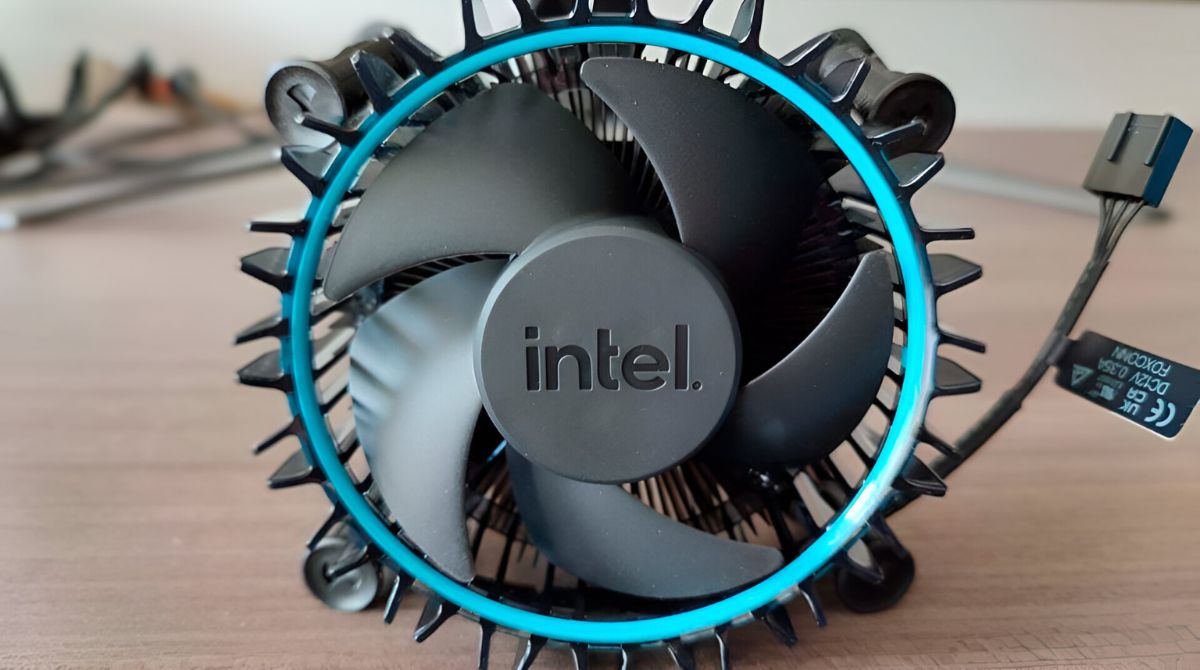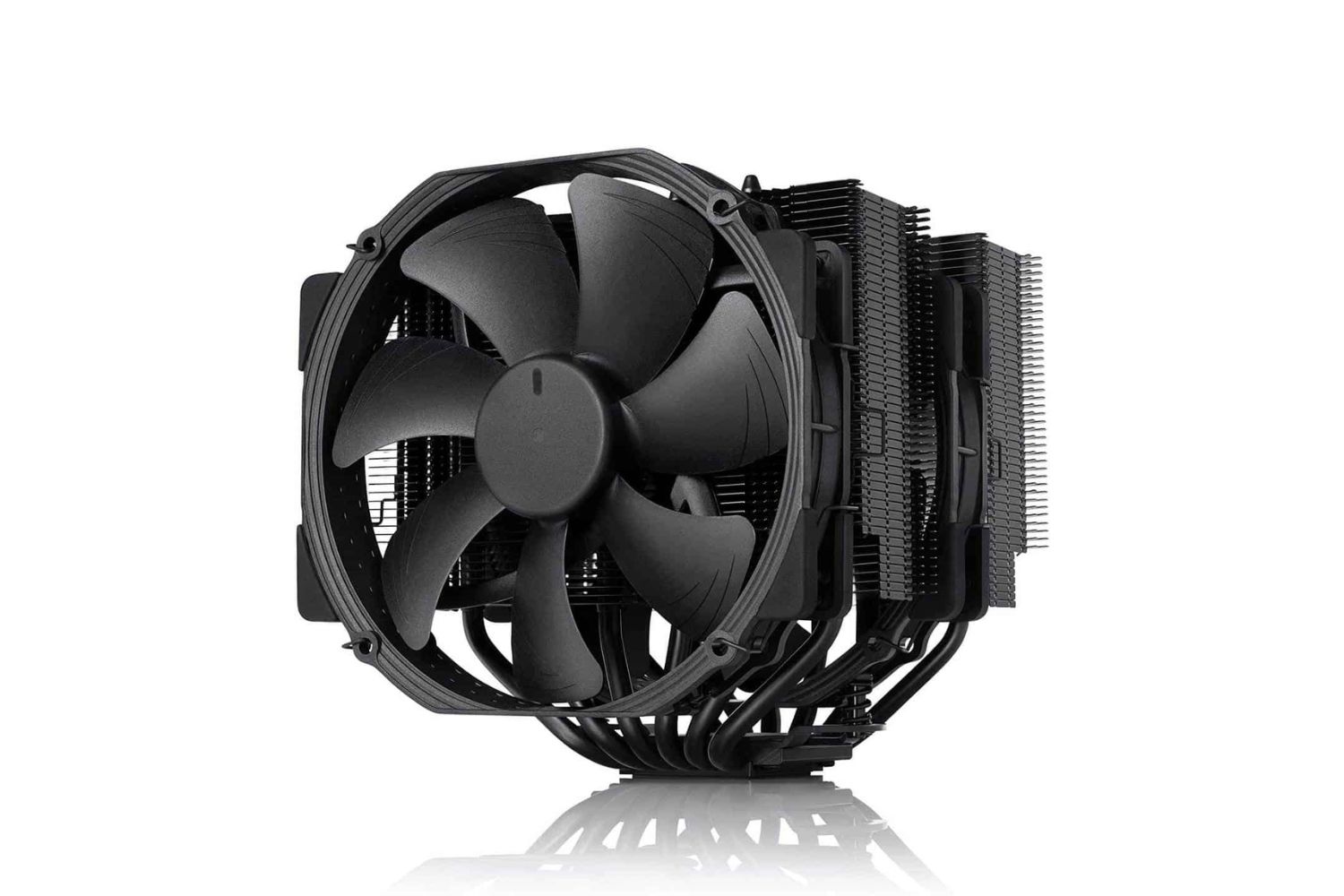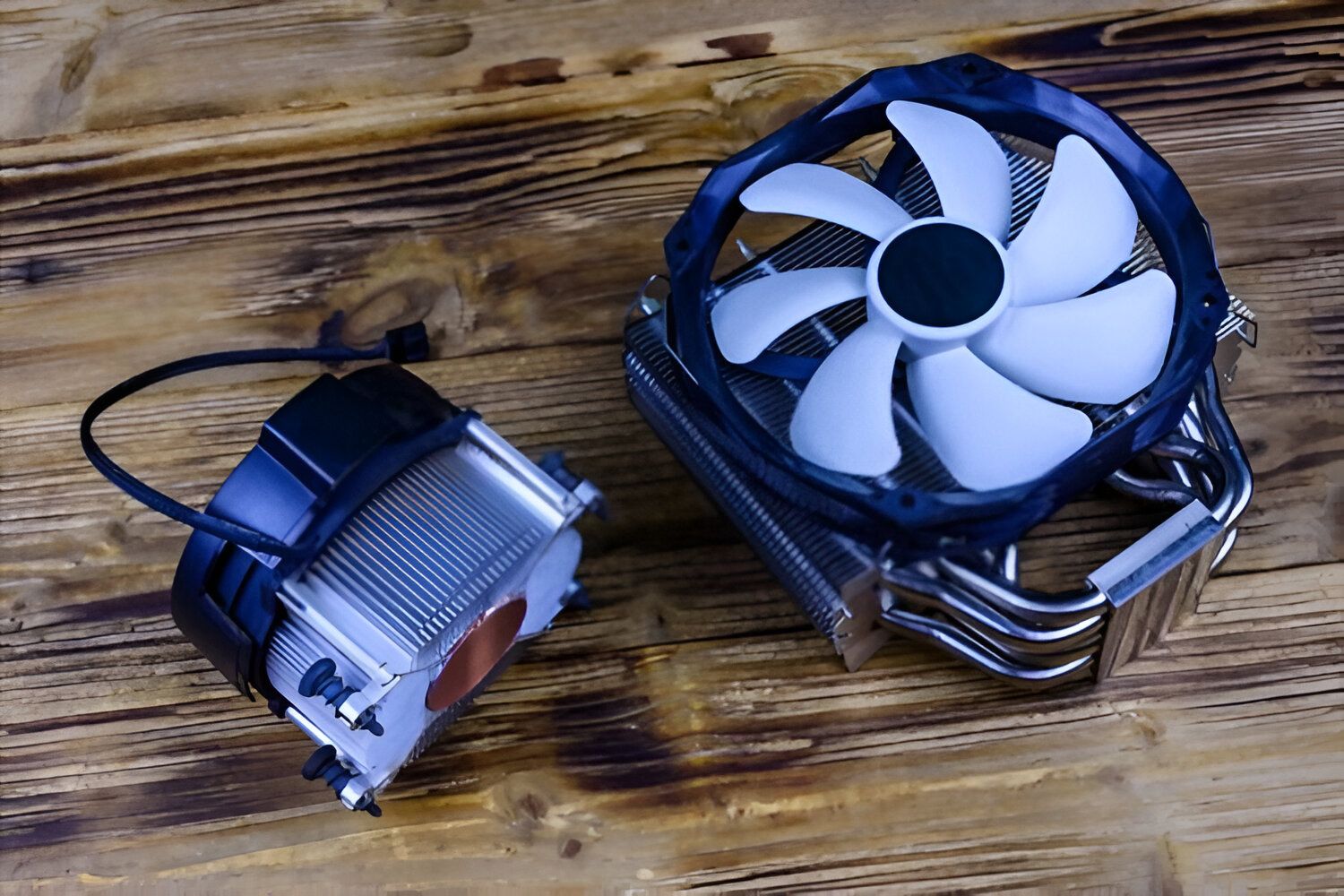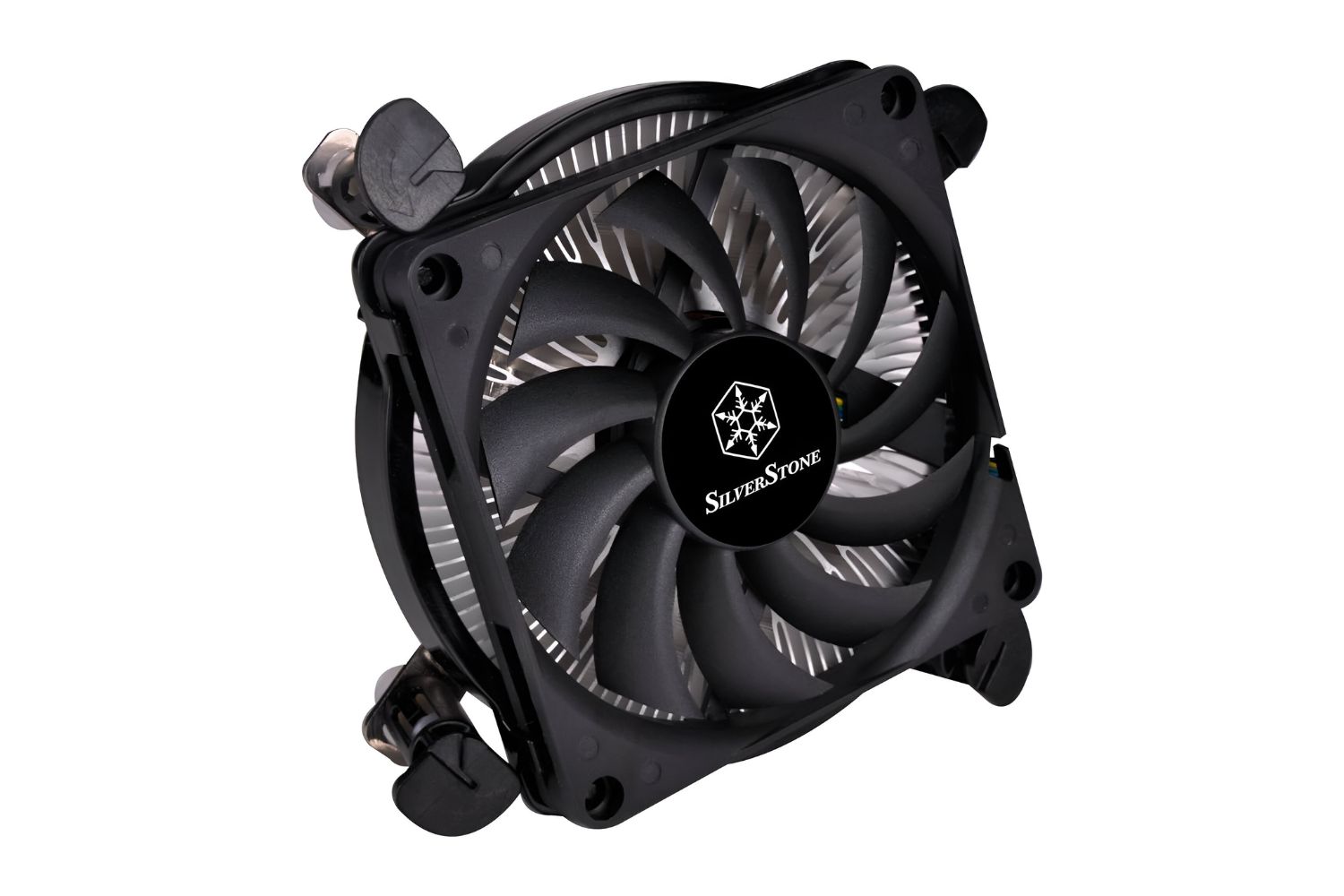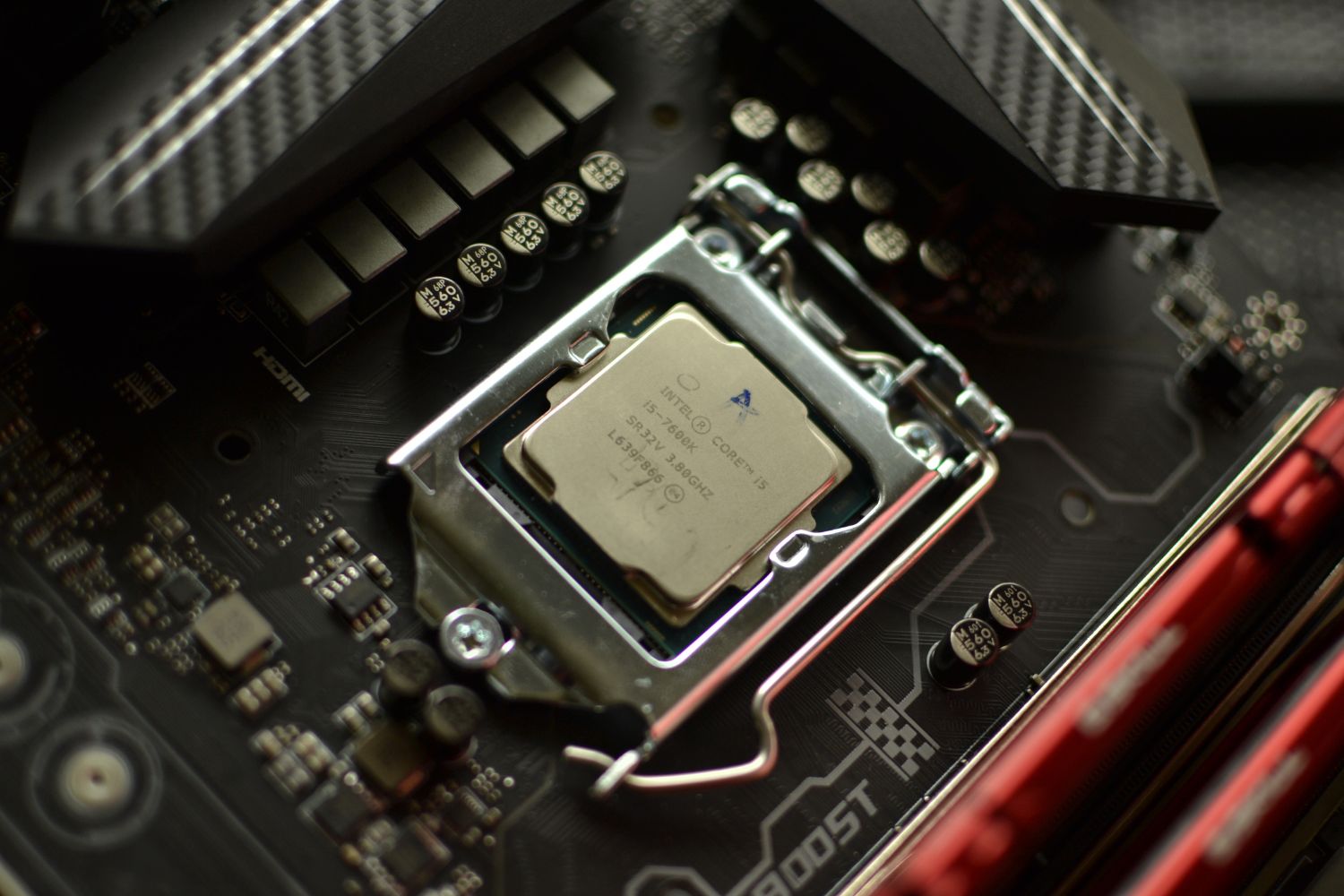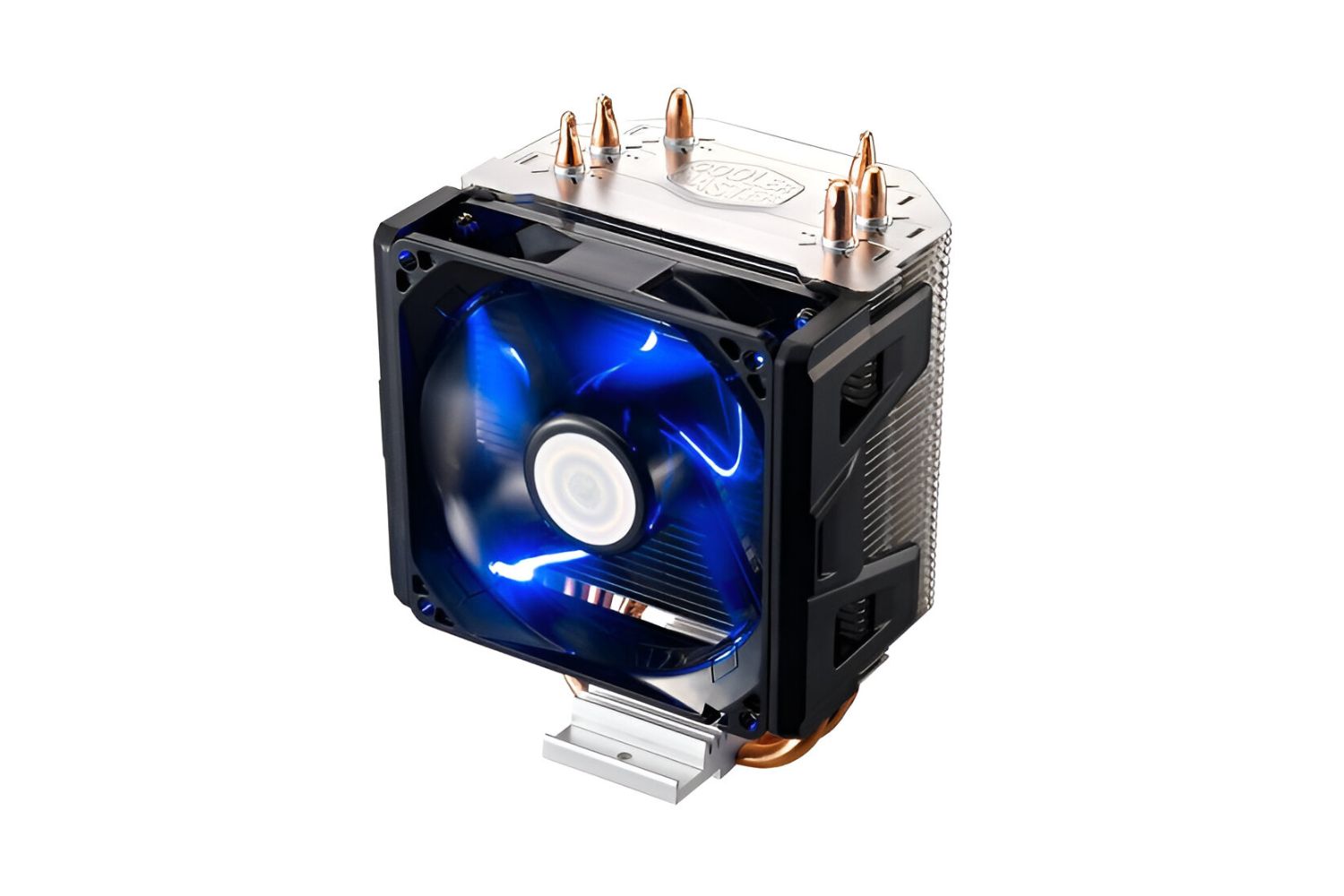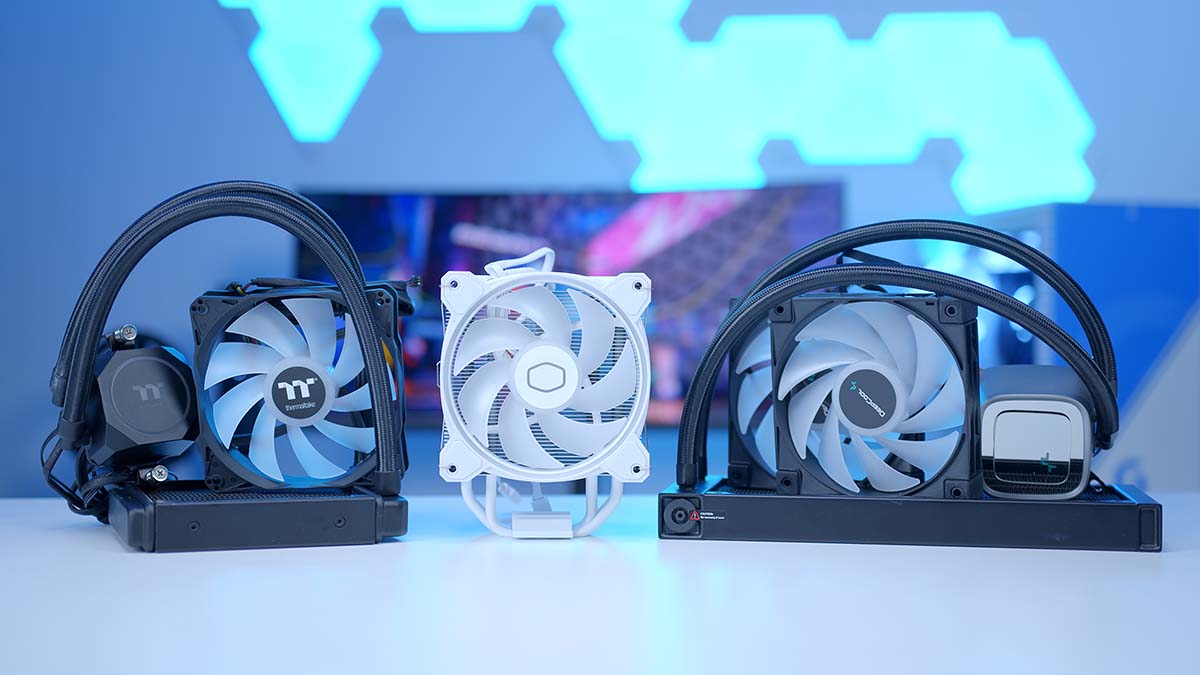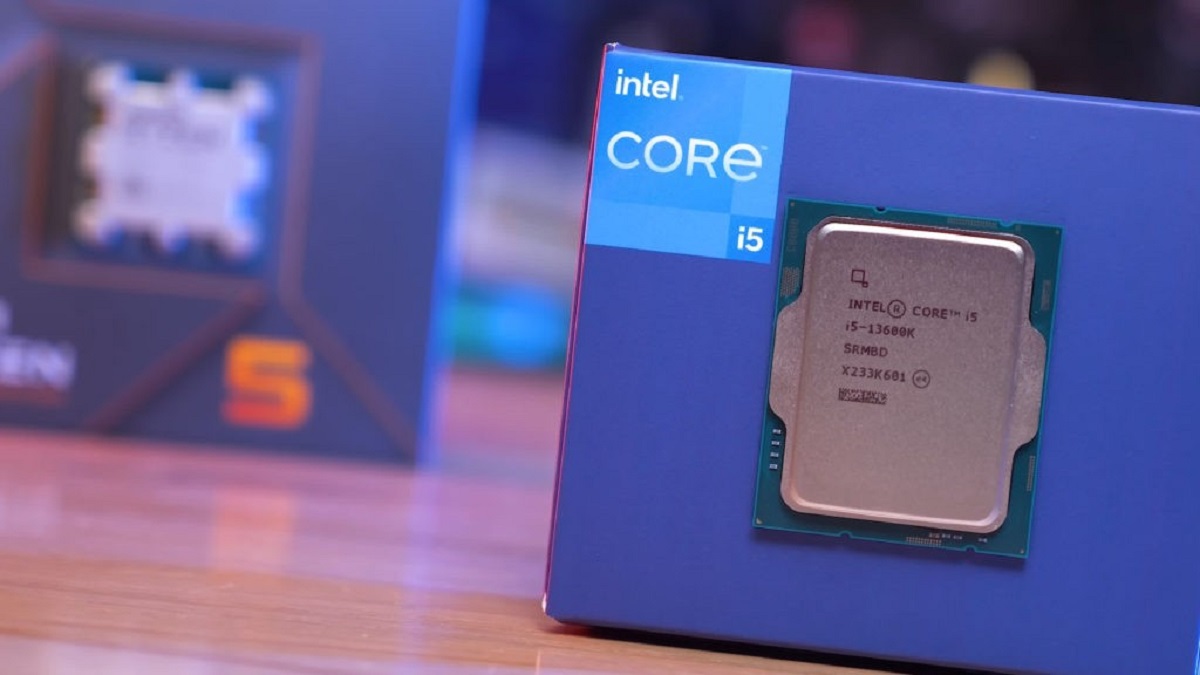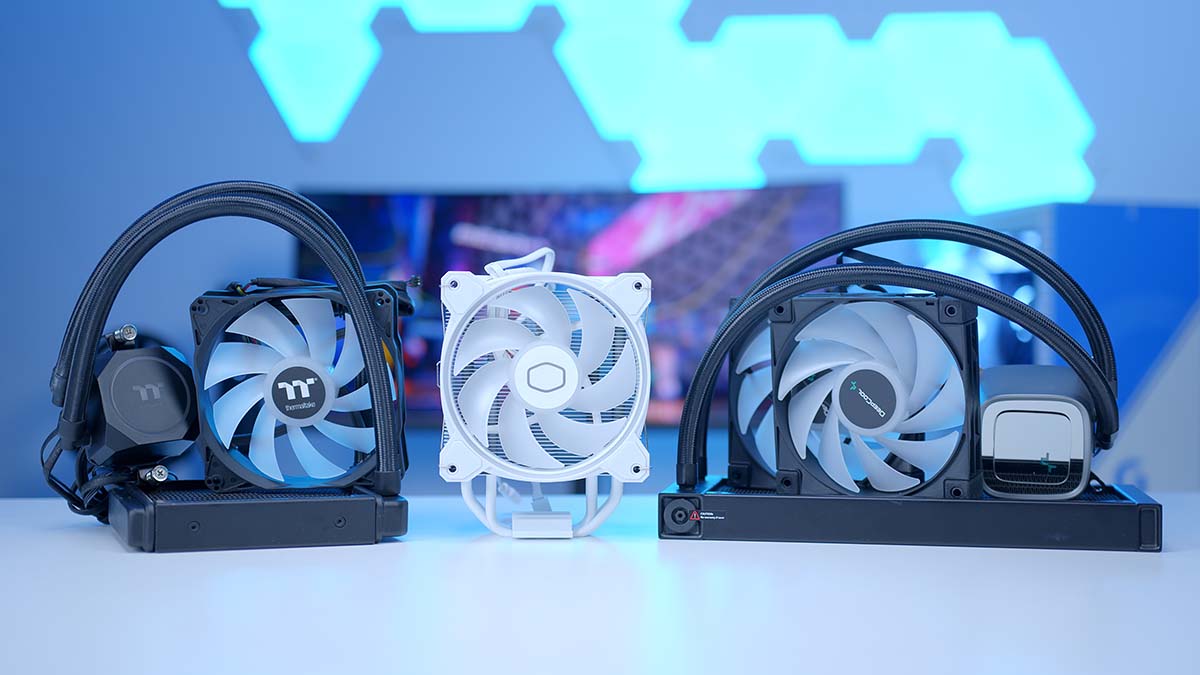Introduction
Welcome to the world of processors and cooling solutions! If you’re new to the world of computer hardware, you may have come across the term “CPU cooler” while researching processors. In this article, we will explore the world of CPU coolers in relation to Intel’s i5 processors.
A CPU cooler, as the name suggests, is a component designed to dissipate the heat generated by the Central Processing Unit (CPU) of a computer system. CPUs generate a significant amount of heat during operation, and if not properly cooled, this heat can impact the performance and longevity of the processor.
Choosing an appropriate CPU cooler is crucial for keeping your processor operating within safe temperature limits. However, when it comes to the Intel i5 processors, you may wonder if they come with a CPU cooler included.
Intel i5 processors are highly popular for their excellent performance and affordability, making them a go-to choice for many computer enthusiasts and gamers. In this article, we will delve into the details of which CPU cooler comes bundled with Intel i5 processors and also discuss other cooling options available for those seeking enhanced cooling capabilities.
So, whether you’re building a new system or considering an upgrade, understanding the cooling options available for Intel i5 processors is essential. Let’s jump right in and explore the world of CPU coolers for the i5!
What is a CPU Cooler?
A CPU cooler is a vital component of a computer system that helps in dissipating the heat generated by the Central Processing Unit (CPU). As the CPU performs complex calculations and operations, it generates significant amounts of heat. If this heat is not effectively removed, it can lead to thermal throttling, reduced performance, and even permanent damage to the processor.
The primary function of a CPU cooler is to transfer the heat away from the CPU and disperse it into the surrounding environment. Typically, a CPU cooler consists of a heatsink, a fan, and in some cases, heat pipes or liquid cooling solutions.
The heatsink is a metal structure with fins that provides a large surface area for heat dissipation. It is usually made of aluminum or copper, which have excellent thermal conductivity. The fan, often mounted on top of the heatsink, generates airflow, which helps in cooling the heatsink by carrying away the heat. The combination of the heatsink and fan work in tandem to remove the CPU’s heat efficiently.
Some high-performance CPU coolers employ heat pipes, which are sealed copper tubes containing a small amount of liquid under low pressure. These heat pipes efficiently transfer heat from the CPU to the fins of the heatsink, maximizing heat dissipation.
On the other hand, liquid cooling solutions, also known as all-in-one (AIO) coolers, use a pump, radiator, and fans to transfer heat away from the CPU. Liquid-cooled systems offer enhanced cooling performance and are popular among overclockers and enthusiasts who demand optimal cooling capabilities.
In addition to the functional aspect, CPU coolers also come in various designs to cater to different aesthetics and compatibility requirements. Some coolers feature RGB lighting options, allowing users to customize the look of their system’s cooling solution.
Overall, a CPU cooler plays a crucial role in maintaining the stability and performance of a computer system, especially when the CPU is under heavy load. Now that we understand the basic concept of CPU coolers, let’s explore the specific details regarding the inclusion of a CPU cooler with Intel i5 processors.
Importance of a CPU Cooler
A CPU cooler is an essential component in any computer system, playing a vital role in maintaining the optimal performance and longevity of the central processing unit (CPU). Here are several reasons why a CPU cooler is of utmost importance:
- Temperature Regulation: The CPU is one of the most heat-generating components in a computer. The constant operation and performance demands of the CPU result in the production of considerable heat. Without a properly functioning CPU cooler, this heat can build up, reaching dangerously high temperatures, which can lead to system instability, crashes, and even permanent damage to the CPU.
- Performance Optimization: High temperatures can negatively impact the performance of a CPU. When the CPU reaches its thermal limits, it activates thermal throttling, a self-preservation mechanism that reduces its performance to dissipate heat and prevent damage. This throttling results in decreased processing power and slower system responsiveness. A CPU cooler helps to maintain lower temperatures, maximizing the CPU’s performance potential.
- Longevity of the CPU: Prolonged exposure to high temperatures can have detrimental effects on the lifespan of the CPU. Overheating can cause the CPU to degrade over time, leading to a reduction in its overall lifespan. An efficient CPU cooler helps to mitigate these risks by keeping the temperatures within safe limits, ensuring the longevity of the CPU.
- Stability and Reliability: Operating at high temperatures can introduce instability and system failures. Heat-related issues can cause intermittent crashes, freezes, and unexpected shutdowns, resulting in data loss and inconvenience. A CPU cooler maintains the temperature within acceptable ranges, enhancing the stability and reliability of the entire system.
Whether you are a casual user, a gamer, or a professional requiring intensive computing power, having a reliable CPU cooler is paramount. Different cooling solutions are available to cater to various needs, including air coolers, liquid coolers, and custom cooling setups. The choice of CPU cooler depends on factors such as budget, system requirements, and personal preferences.
Now that we understand the importance of a CPU cooler, the next question arises: Does the Intel i5 processor come with a CPU cooler included? Let’s find out in the upcoming section.
Does the i5 Come with a CPU Cooler?
Yes, Intel i5 processors typically come with a CPU cooler included in the retail box. The specific type of cooler varies depending on the generation and model of the i5 processor.
Historically, Intel has provided a stock CPU cooler with its non-K series processors, including the i5 lineup. These stock coolers are designed to provide adequate cooling performance for the processor at stock clock speeds and power levels. They are generally sufficient for most everyday computing tasks and even light to moderate gaming.
It’s important to note that the stock cooler provided with Intel i5 processors is generally a standard air cooler, consisting of an aluminum heatsink with a fan attached. While these coolers do a decent job of dissipating heat, they may not be sufficient for more demanding workloads or overclocking.
If you plan to use your i5 processor for tasks that push it to its limits or if you’re interested in overclocking, you may want to consider upgrading to an aftermarket CPU cooler. Aftermarket coolers offer improved cooling performance and can handle higher thermal loads more effectively.
However, if you’re not planning to engage in heavy overclocking or CPU-intensive tasks, the stock cooler provided with the i5 processor should be sufficient for normal usage scenarios. It’s important to ensure proper airflow in your system’s case and periodically clean the cooler and remove any dust buildup to maintain optimum cooling efficiency.
To determine the exact type of cooler included with a specific i5 processor, it’s always a good practice to check the product specifications on Intel’s official website or refer to the specifications provided by the retailer.
Now that we know the i5 typically comes with a CPU cooler, let’s review some of the common cooling solutions bundled with Intel i5 processors in the next section.
Overview of Intel i5 Models
The Intel Core i5 family of processors is known for its excellent balance of performance, power efficiency, and affordability, making it a popular choice for a wide range of computer users. Let’s take a brief overview of some of the notable i5 models:
- Older Generation i5: The older generation i5 processors, such as the 2nd, 3rd, and 4th generation, were highly regarded for their reliable performance. These processors, based on the Sandy Bridge, Ivy Bridge, and Haswell architectures respectively, offer a good combination of clock speed, number of cores, and power consumption for general computing tasks.
- 8th and 9th Generation i5: With the release of the 8th and 9th generation i5 processors, Intel introduced significant improvements in performance and technology. These processors, based on the Coffee Lake and Coffee Lake Refresh architectures, introduced more cores and higher clock speeds, resulting in enhanced multitasking capabilities and improved gaming performance.
- 10th Generation and Beyond: Intel continued to refine its i5 lineup with subsequent generations. The 10th generation i5 processors, codenamed Comet Lake, featured up to six cores and introduced Hyper-Threading technology for better multi-threaded performance. The latest generation, 11th Gen Intel Core i5, codenamed Tiger Lake, boasts even higher clock speeds, AI integration, and improved graphics performance.
It’s important to note that the specific features, performance, and power requirements of each i5 model can vary. When choosing an i5 processor, consider factors such as your intended usage, budget, and the compatibility of the chipset and socket.
Next, let’s explore the CPU cooler options that are included with different Intel i5 models.
CPU Cooler Included in Intel i5 Models
The CPU cooler included with Intel i5 processors depends on the specific model and generation. Intel has traditionally bundled a stock CPU cooler with non-K series processors, which includes most i5 models. Let’s take a closer look at the CPU cooler options that are typically included with different Intel i5 models:
- Older Generation i5: The older generation i5 processors, such as the 2nd to 4th generation, generally came with a stock cooler known as the Intel Boxed Heatsink and Fan. These coolers featured an aluminum heatsink and an attached fan, providing sufficient cooling for normal usage scenarios.
- 8th and 9th Generation i5: The 8th and 9th generation i5 processors often included the Intel BXTS15A Cooler, also known as the i5 Retail Boxed Cooler or the Wraith Stealth Cooler. This cooler featured an aluminum heatsink with a fan and provided improved cooling performance compared to the older generation models.
- 10th Generation i5: The 10th generation i5 processors typically come with the Intel E97379-003 CPU cooler. This stock cooler features an aluminum heatsink and fan and is designed to handle the thermal demands of the i5 processors within their specified power limits.
- 11th Generation i5: The 11th generation i5 processors are commonly bundled with the Intel BXTS15A Cooler, which is the same cooler that was included with the 8th and 9th generation i5 models. This cooler provides efficient cooling for the processor, ensuring optimal performance under normal operating conditions.
While the stock CPU coolers included with the i5 processors are adequate for most users, if you plan to engage in tasks that put a higher demand on the CPU, such as heavy gaming, media editing, or overclocking, you may want to consider upgrading to an aftermarket CPU cooler. Aftermarket coolers offer better cooling performance, lower noise levels, and can handle higher thermal loads more effectively.
It’s also worth noting that some special edition i5 processors, such as the “K” series i5 processors designed for overclocking, usually do not come with a stock cooler included. This is because enthusiasts who purchase these unlocked processors tend to prefer custom cooling solutions to achieve higher overclocking potential.
Now that we have an understanding of the CPU cooler options included with Intel i5 processors, let’s explore additional aftermarket cooler options for those seeking enhanced cooling performance.
Stock Intel Heatsink & Fan
The stock Intel heatsink and fan, commonly referred to as the Intel Boxed Heatsink and Fan, are included with non-K series Intel i5 processors. These cooling solutions are designed to provide adequate cooling for the processor under normal operating conditions. Let’s take a closer look at the features and performance of the stock Intel heatsink and fan:
Design: The stock Intel heatsink and fan feature an aluminum heatsink with a copper or aluminum base and an attached fan. The heatsink is designed with fins to increase the surface area for efficient heat dissipation.
Compatibility: The stock Intel heatsink and fan are designed to fit the specific socket of the corresponding i5 processor. They are compatible with the standard mounting mechanisms provided by most motherboard manufacturers, making installation straightforward.
Cooling Performance: The stock Intel heatsink and fan provide sufficient cooling for normal usage scenarios, ensuring that the processor operates within safe temperature limits. However, they may struggle to handle high thermal loads or overclocking demands, as they are not specifically optimized for these scenarios.
Noise Level: The stock Intel heatsink and fan generally operate at an acceptable noise level, producing relatively low noise during regular operation. However, under heavy loads, the fan speed may increase, resulting in higher noise levels compared to aftermarket coolers.
Limitations: While the stock Intel heatsink and fan are adequate for most everyday computing tasks, they may not be the ideal choice for users engaging in demanding tasks such as gaming, content creation, or overclocking. Their cooling performance is optimized for the processor’s stock clock speed and power levels.
It’s important to note that maintaining proper airflow in the system’s case and periodically cleaning the stock Intel heatsink and fan to remove any dust buildup can help maintain optimum cooling efficiency. Dust accumulation can reduce heat dissipation and negatively impact cooling performance.
If you find that the stock Intel heatsink and fan are not meeting your cooling requirements, or if you plan to engage in heavy overclocking or CPU-intensive tasks, you may want to consider upgrading to an aftermarket CPU cooler. Aftermarket coolers offer improved cooling performance, quieter operation, and are designed to handle higher thermal loads more effectively.
Now that we have explored the stock Intel heatsink and fan, let’s dive into some options for aftermarket CPU coolers specifically tailored for Intel i5 processors.
Upgraded Cooler Options for Intel i5
If you’re looking to improve the cooling performance of your Intel i5 processor or planning to engage in tasks that require higher thermal efficiency, upgrading to an aftermarket CPU cooler is a viable option. Here are some popular upgraded cooler options specifically tailored for Intel i5 processors:
- Air Cooling Solutions: Air coolers are a popular choice for users seeking improved cooling performance without the complexity and maintenance of liquid cooling. Brands such as Noctua, be quiet!, Cooler Master, and Corsair offer a wide range of air coolers that are compatible with Intel i5 processors. These coolers often feature larger heatsinks, multiple heat pipes, and larger fans for enhanced heat dissipation and reduced noise levels.
- All-in-One Liquid Coolers (AIO): All-in-One liquid coolers, also known as AIO coolers, combine the benefits of liquid cooling with the convenience of an off-the-shelf solution. These coolers consist of a pump, radiator, fans, and a pre-filled coolant loop. Brands such as NZXT, Corsair, and Cooler Master offer a variety of AIO coolers featuring different radiator sizes to suit various case sizes and cooling requirements. These liquid coolers provide efficient heat transfer, lower temperatures, and can handle higher thermal loads effectively.
- Custom Liquid Cooling: For enthusiasts looking for the best cooling performance and aesthetics, custom liquid cooling solutions offer the ultimate cooling capabilities. Custom loops consist of a pump, reservoir, radiator, water blocks, tubing, and fittings, which are assembled and tailored to the specific system. Building a custom liquid cooling loop requires more expertise, time, and investment, but it provides the highest level of cooling performance and customization options.
When choosing an upgraded cooler for your Intel i5 processor, it’s essential to consider factors such as your budget, case size, compatibility, noise levels, and thermal requirements. It’s also worth checking the manufacturer’s specifications and user reviews to ensure the cooler fits your specific needs.
Additionally, keep in mind that the cooling requirements may vary depending on the specific i5 model and the intended usage. If you’re not planning to engage in heavy overclocking or CPU-intensive tasks, a mid-range aftermarket cooler may be sufficient to meet your needs.
Upgrading to an aftermarket CPU cooler can provide improved cooling efficiency, lower temperatures, reduced noise levels, and even the potential for better overclocking performance. It’s an excellent investment for users seeking enhanced cooling capabilities and maximizing the potential of their Intel i5 processors.
Now that we’ve explored the options for upgraded cooler solutions, let’s conclude our discussion on cooling options for Intel i5 processors.
Aftermarket CPU Coolers for Intel i5
When it comes to aftermarket CPU coolers for Intel i5 processors, there are plenty of options available to suit different cooling needs and preferences. These coolers offer improved cooling performance, quieter operation, and enhanced thermal management compared to the stock cooler. Let’s explore some popular aftermarket CPU coolers specifically designed for Intel i5 processors:
- Air Cooling Solutions: Air coolers remain a popular choice due to their cost-effectiveness, ease of installation, and reliable performance. Brands like Noctua, be quiet!, Cooler Master, and Arctic offer a wide range of air coolers tailored for Intel i5 processors. These coolers often feature larger heatsinks with additional heat pipes, high-quality fans, and advanced technologies like direct contact heat pipes for efficient heat dissipation.
- All-in-One Liquid Coolers (AIO): All-in-One liquid coolers provide advanced cooling capabilities without the complexities of custom liquid cooling setups. Brands such as NZXT, Corsair, and Cooler Master offer a variety of AIO coolers compatible with Intel i5 processors. These coolers feature a pump, radiator, fans, and a pre-filled closed-loop design. AIO coolers excel at dissipating heat and offer the benefits of liquid cooling, such as lower temperatures and customizable RGB lighting options.
- Custom Liquid Cooling: For enthusiasts seeking the absolute best in cooling performance and customization options, custom liquid cooling loops are the go-to choice. Building a custom loop requires expertise and meticulous planning, but it offers unparalleled cooling performance and aesthetics. Components from reputable brands like EK Water Blocks, Bitspower, and Thermaltake enable users to create a fully custom cooling solution tailored to their specific Intel i5 processor and system requirements.
When selecting an aftermarket CPU cooler, consider factors such as your budget, case dimensions, clearance for the cooler, noise levels, and your specific cooling needs. It’s also worth checking user reviews and benchmarks to gauge the cooler’s performance and reliability.
Remember that choosing the right aftermarket cooler largely depends on your usage scenario. If you’re primarily engaging in everyday tasks, a mid-range air cooler can provide sufficient cooling performance. However, if you’re a power user, overclocker, or engage in resource-intensive activities like gaming or content creation, investing in a high-performance air cooler or AIO liquid cooler can offer optimal cooling capabilities for your Intel i5 processor.
Upgrading to an aftermarket CPU cooler for your Intel i5 processor provides several benefits, including better temperature control, improved system stability, longer CPU lifespan, and potentially higher performance during demanding tasks. It’s an investment that can significantly enhance the overall experience of your computer system.
Now that we’ve explored the options for aftermarket CPU coolers for Intel i5 processors, let’s wrap up our discussion.
Conclusion
Choosing the right CPU cooler is crucial for maintaining the optimal performance, stability, and longevity of your Intel i5 processor. While Intel i5 processors typically come with a stock CPU cooler, it’s important to assess your specific cooling requirements to determine if an upgrade is necessary.
The stock Intel heatsink and fan provided with non-K series i5 processors offer adequate cooling for normal usage scenarios. However, if you plan to engage in demanding tasks like gaming, content creation, or overclocking, upgrading to an aftermarket CPU cooler can provide improved cooling performance and better thermal management.
When considering aftermarket CPU coolers for your Intel i5, you have a range of options available. Air coolers from reputable brands like Noctua, be quiet!, Cooler Master, and Corsair offer efficient cooling and ease of installation. All-in-One liquid coolers from brands such as NZXT, Corsair, and Cooler Master provide enhanced cooling capabilities and customizable aesthetics.
For enthusiasts seeking the highest level of cooling performance and customization, custom liquid cooling setups offer unparalleled control, but they require more expertise and investment.
Remember to consider factors such as budget, case compatibility, noise levels, and thermal requirements when choosing an aftermarket CPU cooler for your Intel i5 processor. It’s also important to clean and maintain your cooler regularly to ensure optimum performance.
In conclusion, whether you stick with the stock Intel cooler or opt for an upgraded aftermarket solution, having a reliable and efficient CPU cooler is essential for keeping your Intel i5 processor operating within safe temperature limits and maximizing its performance potential. Assess your cooling needs, evaluate the options available, and make an informed decision to enhance the overall performance and longevity of your Intel i5-based system.







